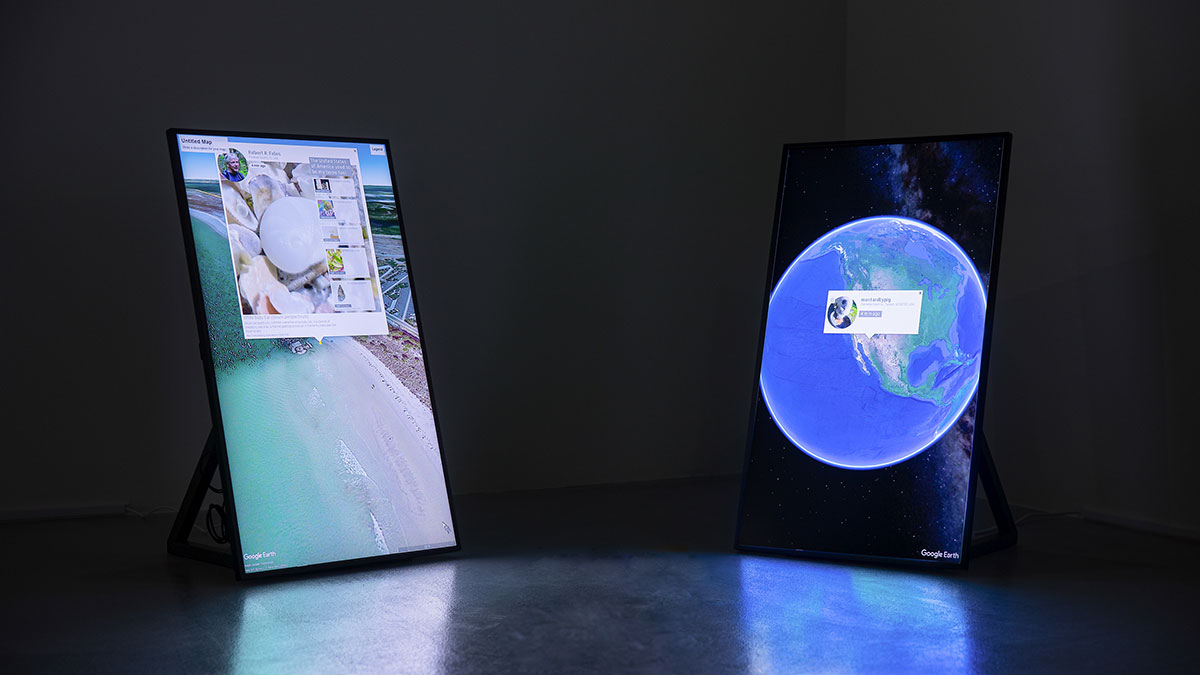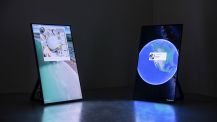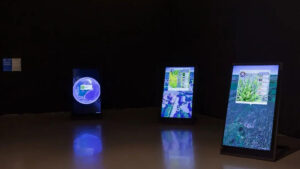Digital Resonance
Inaugural Exhibition of the Gwangju Media Art Platform G.MAP, Gwangju, KoreaKuratiert von: Seungah Lee & Janice Kim
Künstler*innen: Anna Kim, Marc Lee, Venzha Christ+ISSS, Akihiko Taniguchi, Cheng Hsien-yu, Rafael Lozano-Hammer, Lawrence Lek, MORAKANA, teamVOID, Daniel Iregui, Baron Lanteigne, Saša Spačal, Andreas Schlegel, Yuge Zhou, Sabrina Ratté

G.MAP, Gwangju
Opening of the Gwangju Media Art Platform (G.MAP)
As part of the “UNESCO Creative City of Media Arts”, the Gwangju Media Art Platform (G.MAP) opening exhibition “Digital Resonance” in Gwangju City, a hub of Korean society, culture, history, and art, will be held from March 30th to June 29th. G.MAP aims for a mid- to long-term project for continuous network activities of domestic and foreign media art artists, and introduces domestic artists, including local artists, to the international stage through cultural cooperation projects with overseas partner countries.
Digital Resonance: Evolving Experiences in Art
We are wandering around the world, leaving ourselves to a new paradigm, a vast wave created by the emergence of new technologies. According to 20th century German philosopher Walter Benjamin, we are the flâneur, a stroller or lounger in the media world. We encounter and experience a series of activities and commodities that enrich the world, adding color to our lives or broadening our horizons, that is, artworks. As technology advances, the world and society changes, and history is created. Art cannot be an exception.
Although technological media has long appeared as an essential medium in works of art, rapid changes that have emerged in recent years do not allow analog generations to spare time for analysis and judgment. The rapid pace of change ahead of the flow of social consciousness of these changes causes a kind of social motion sickness and dizziness. Still, the relationship between the generations born in the digital age of the 21st century with technology will be no different from that of humankind in the 20th century with paper. In replacing text with image, human reception and experience of perceiving the world have changed, and these changes are repeated in the development of digital media and among new generations, creating a ripple effect or resonance that affects both the creation and the way we experience art. The current digital world demands a new recognition system that is entirely different from the value or judgment system of the material world, as art has a different form, expression, and judgment system. Nevertheless, this change is not a product of linear history and perceptive evolution but rather another perception system that projects the past. In terms of art experience, it should be noted that works of art are being reconstructed by the audience, the subject of appreciation and experience. It is because a series of activities to experience and appreciate works of art through the mind and body are defined by individuals facing the time, place, and circumstance of each generation.
Today, the function of digital media is affecting the human senses in various forms. After COVID-19, it will have a more significant influence on the lives of humans that have been networked through more innovative and experimental methods. Along with the video game industry, VR (Virtual Reality), AR (Augmented Reality), MR (Mixed Reality), XR (Extended Reality), and haptic technologies stimulate the senses of humans in ways that have not been experienced in the past and further enable new ways of communication. Communication with and interpretation of the world, via the relationship to and interaction between humans and objects proposed by technological media-based works of art, will enable individuals to build various experiences and meanings.
Ausgestellt
Used to Be My Home Too
Echtzeit-KartierungDieses Experiment zeigt Fotos von Pflanzen, Pilzen und Tieren, die gerade jetzt von unbekannten Nutzer:innen auf iNaturalist.org via Mobiltelefon hochgeladen werden. Diese werden auf Google Earth exakt an dem Ort kartiert, an dem sie fotografiert wurden. Dazu werden in Echtzeit via RedList.org taxonomisch ähnliche Arten zugeordnet, die im selben Land vorkamen und innerhalb der letzten 30 Jahren mehr …

Haus Konstruktiv, Zurich

G.MAP, Gwangju

CAFA Art Museum, Beijing